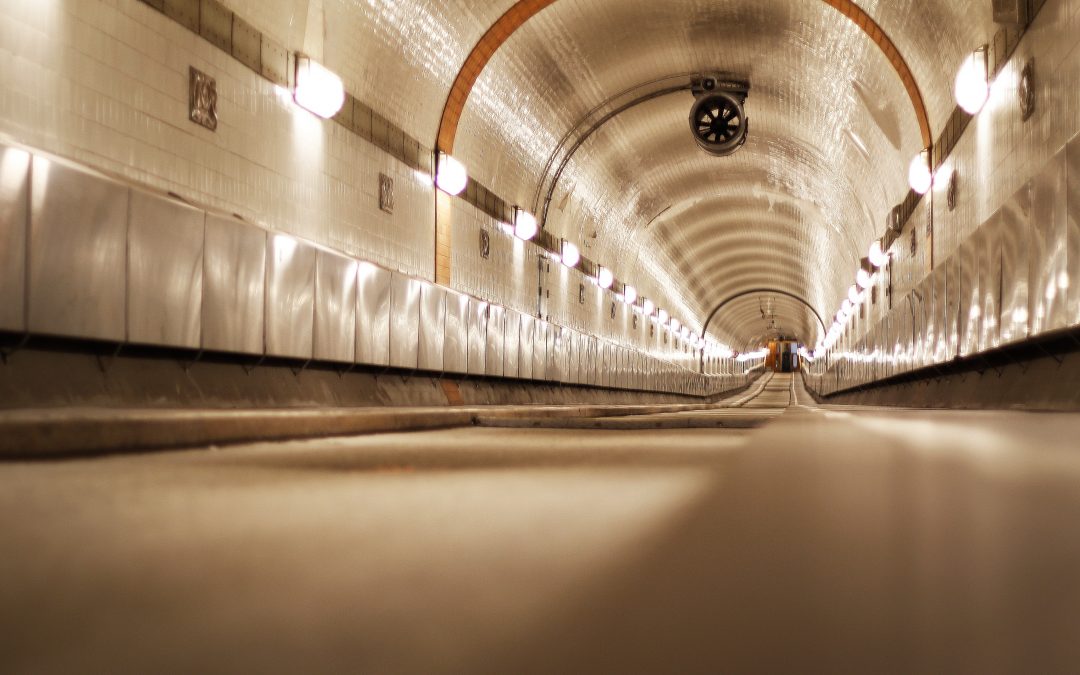For many, it’s the gateway to New York City: the Holland Tunnel, an underwater channel through which cars disappear, endure a hellscape of dimly lit traffic, and eventually emerge whole on Canal street into a sea of other vehicles.
Though not ideal for claustrophobics, the Holland Tunnel is widely considered an extraordinary feat of engineering — especially considering its age: 89 years. The 1.7 mile tunnel was begun in 1920 and completed in 1927, and bears the name of first chief engineer, Clifford M. Holland, who unfortunately did not live to see its completion.
For centuries, the only way one could travel across the lower Hudson River was by ferry. Considering the amount of traffic that pass through the tunnel in the 21st century — 34,698,000 vehicles a year in 2007 — it’s obvious why a ferry would not cut it, especially as automobiles gained prominence.
Tunnels proved a feasible solution after several railways were successfully built beneath the river. In 1906 New Jersey and New York commissioned jointly to build a bridge, before shifting to plan for a tunnel in 1913 due to height concerns.
An engineering triumph
Several design proposals for the tunnel were passed on before Clifford Holland’s was accepted. Both Holland and his engineering successor, Milton Freeman, would die before the tunnel’s completion in 1927. Ole Singstad oversaw the completion of the tunnel and also designed its innovative ventilation system.
A mile and a half long tunnel, you see, is more difficult than it seems — and the claustrophobic among us should be especially grateful for ventilation technology most of us didn’t know we needed. The Holland Tunnel in particular is an early example of mechanically ventilated design, and the first ever mechanically ventilated underwater vehicular tunnel.
To keep automobile fumes from polluting the air inside the tunnel, Singstad came up with a practical solution. It works like this: four ventilation buildings, two on each side of the Hudson, house 84 fans that provide a change of air every 90 minutes. Thanks to this solution, air quality in the tunnel is kept well within safety limits. This way in the off-chance you do need to leave your car in a particularly bad bout of traffic, the air is plenty fresh.
At the time of the tunnel’s opening, the press declared that the air in the tunnel was fresher than many open-air streets in the city.
Opening and operation
The tunnel was opened to much aplomb by President Coolidge, who ceremonially triggered the event from his yacht, as giant brass bells rung at either end of the tunnel. It was an immediate success as a portal from New Jersey to New York City.
The tunnel has needed very little updating over the years: a testament to its solid design and construction. There have been notable moments in time and history that mark the tunnel’s evolution as the City of New York grew up and outward.
In 1930, control was transferred to the New York and New Jersey Port Authority, which continues to operate it today. In 1955, a narrow, one-man electric car was designed for police officers to maneuver in case of emergencies.
This emergency protocol makes since, because over the years the Holland Tunnel has weathered some especially nasty events, like fire aboard an electrical truck in 1949, and severe flooding during Hurricane Sandy in 2012. It’s considered one of the most high-risk terrorist targets in the United States by government officials.
There have been close calls in this regard: Following September 11 attacks, the tunnel remained closed for a month. The FBI uncovered a plot they believed the Holland Tunnel was the target of in 2006, though it turned out to be aimed at the New Jersey PATH.
Today, the tunnel remains key to entrance and exiting of the Big Apple. Though tolls have gone up, its function remains the same, and its legacy grows with every year.
The Holland Tunnel was made a National Historic Civil and Mechanical Engineering Landmark by the American Society of Civil and Mechanical Engineers in 1982 and a National Historic Landmark in 1993 by the U.S. Department of the Interior.
Featured image: Noud W. via Flickr

